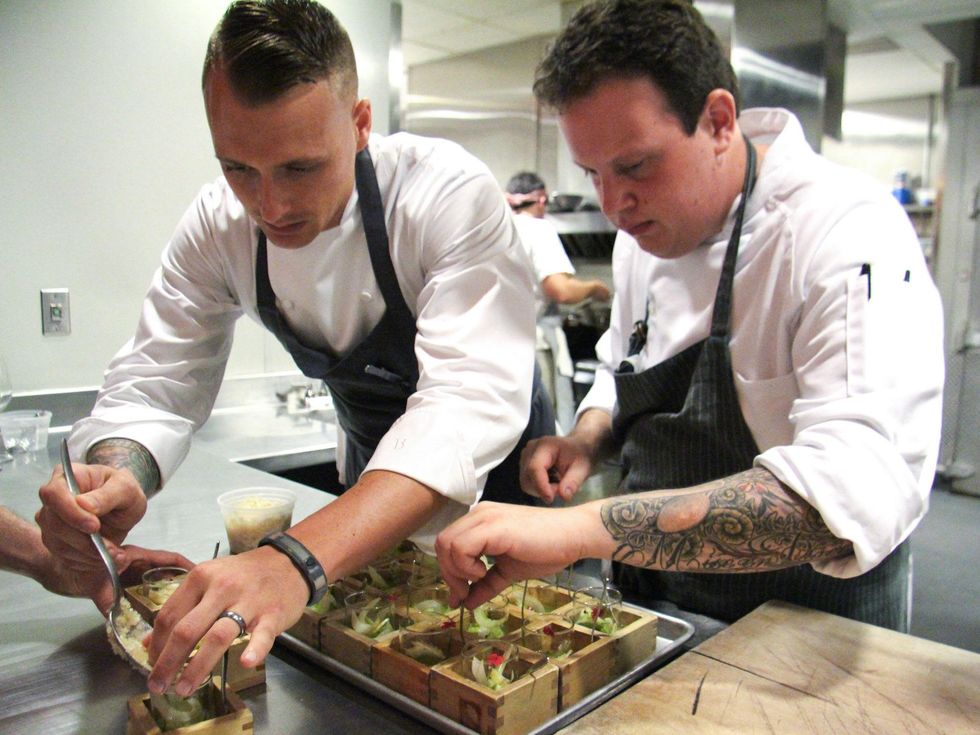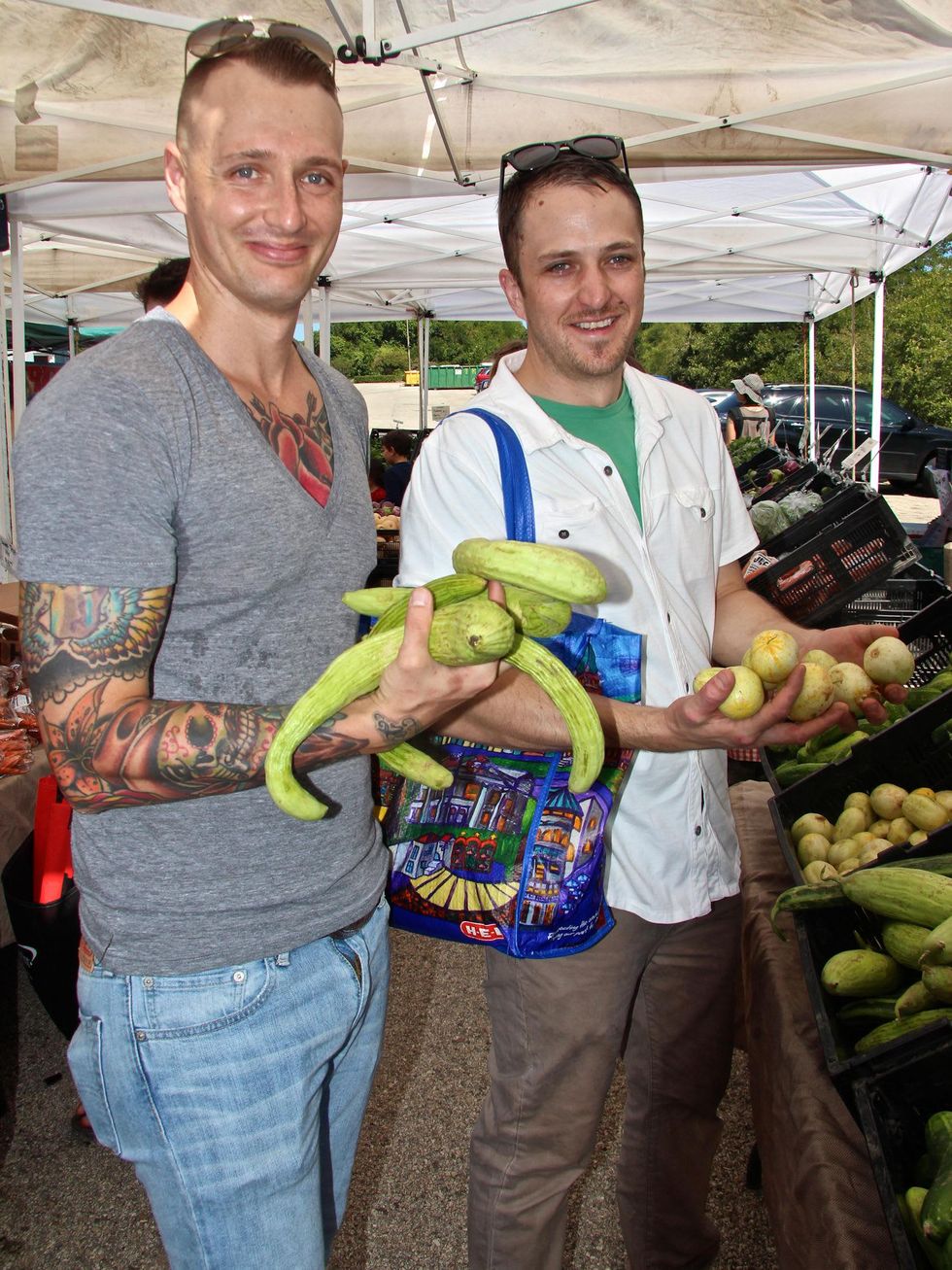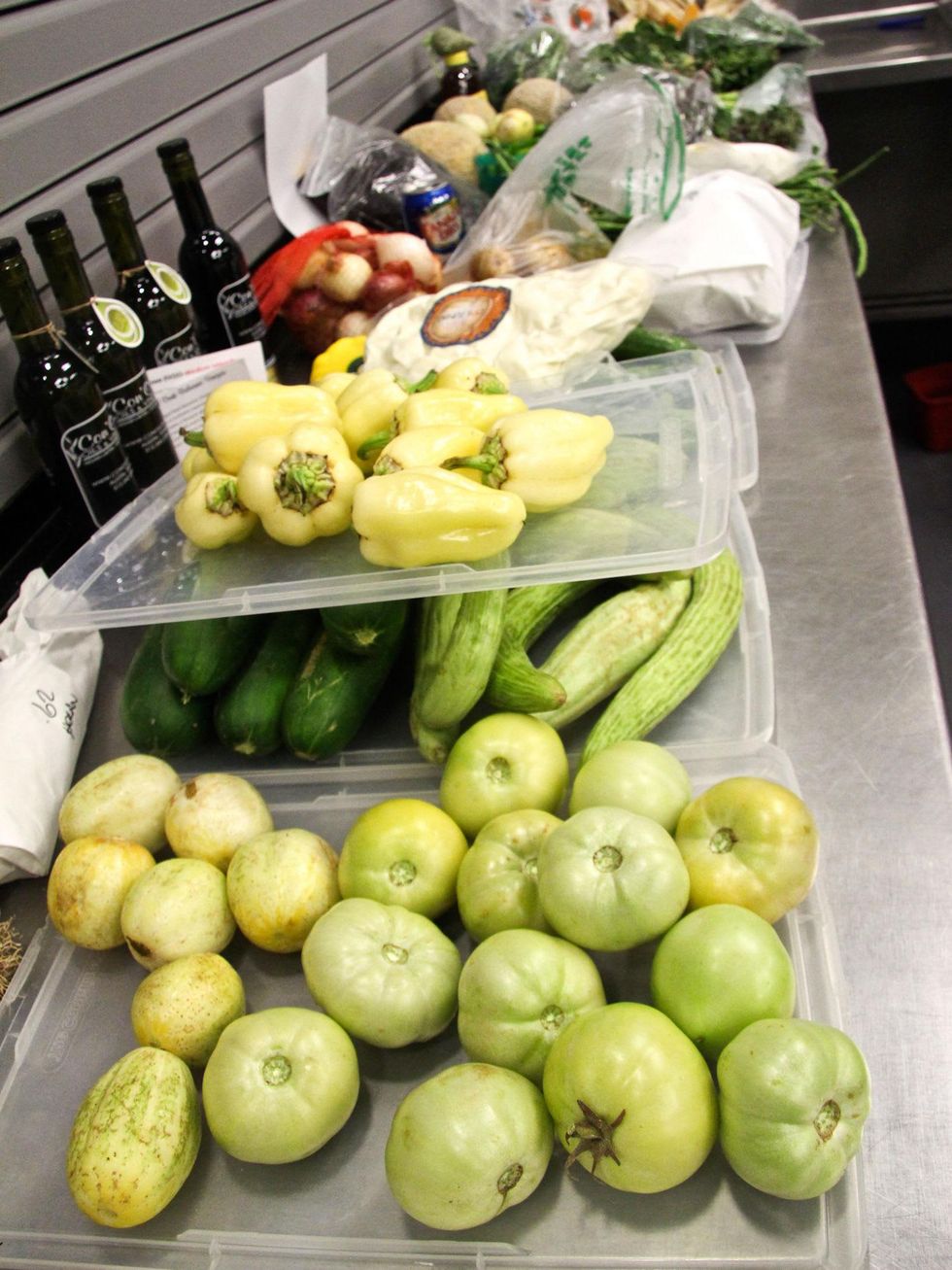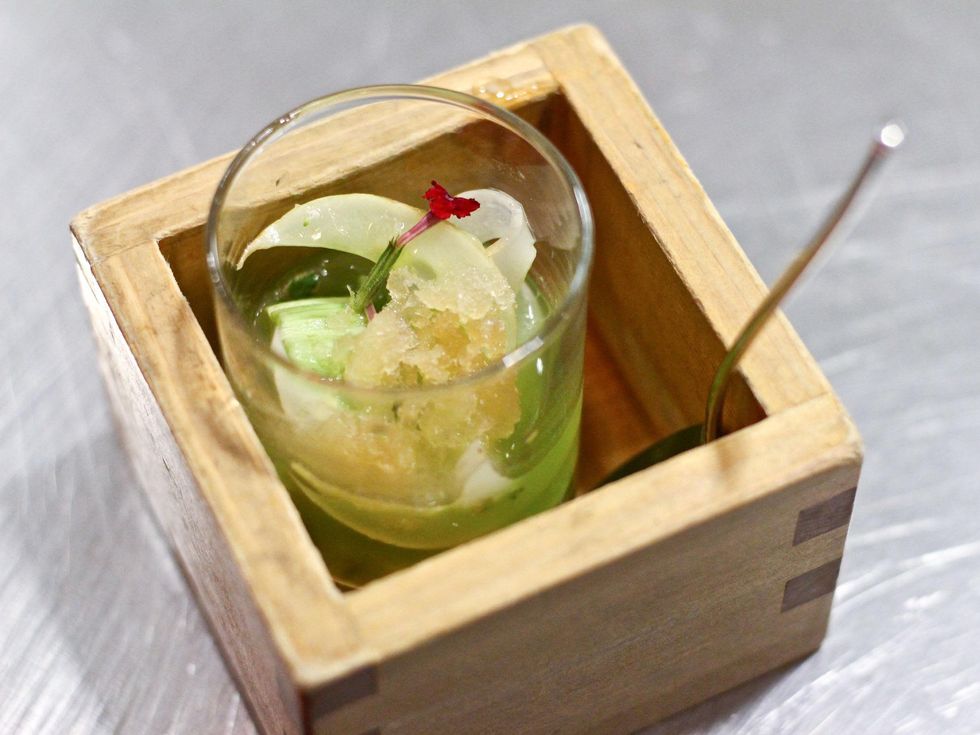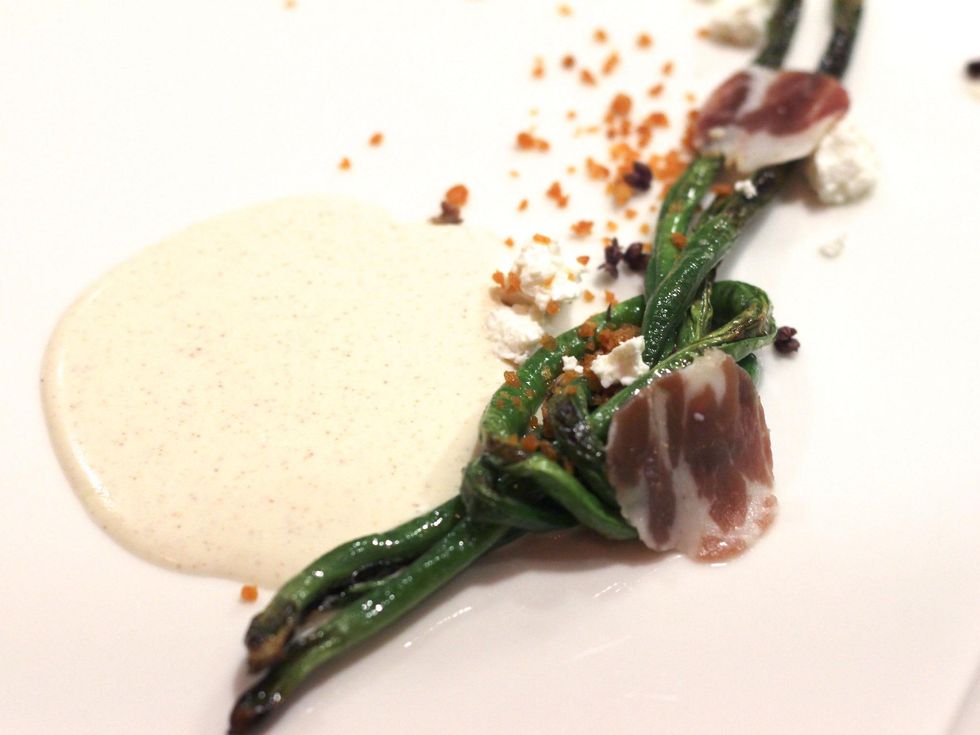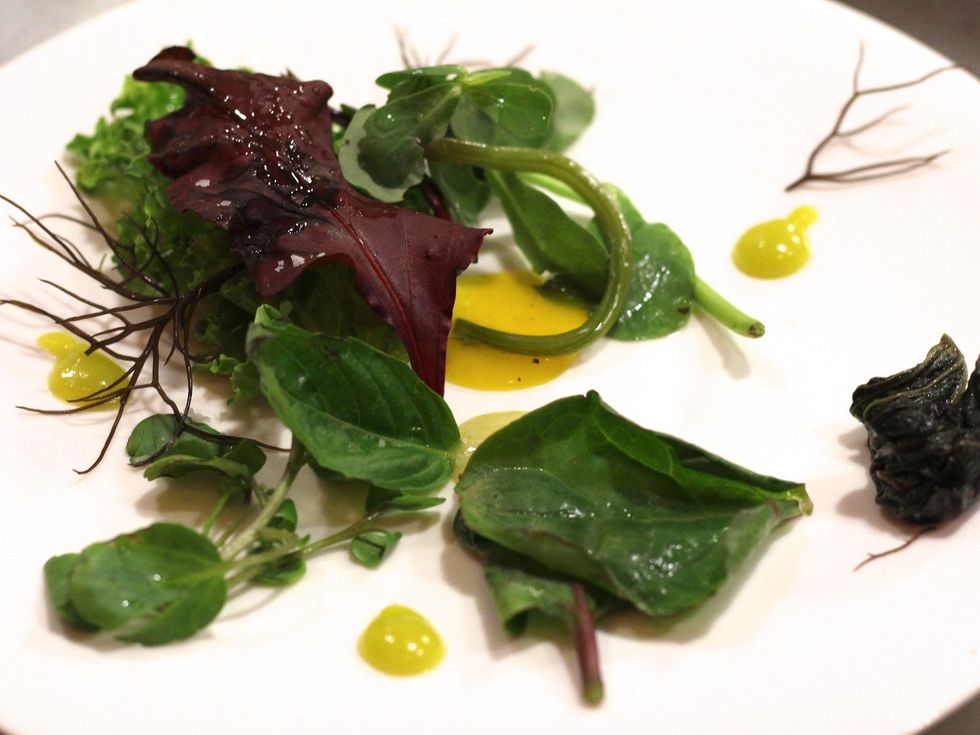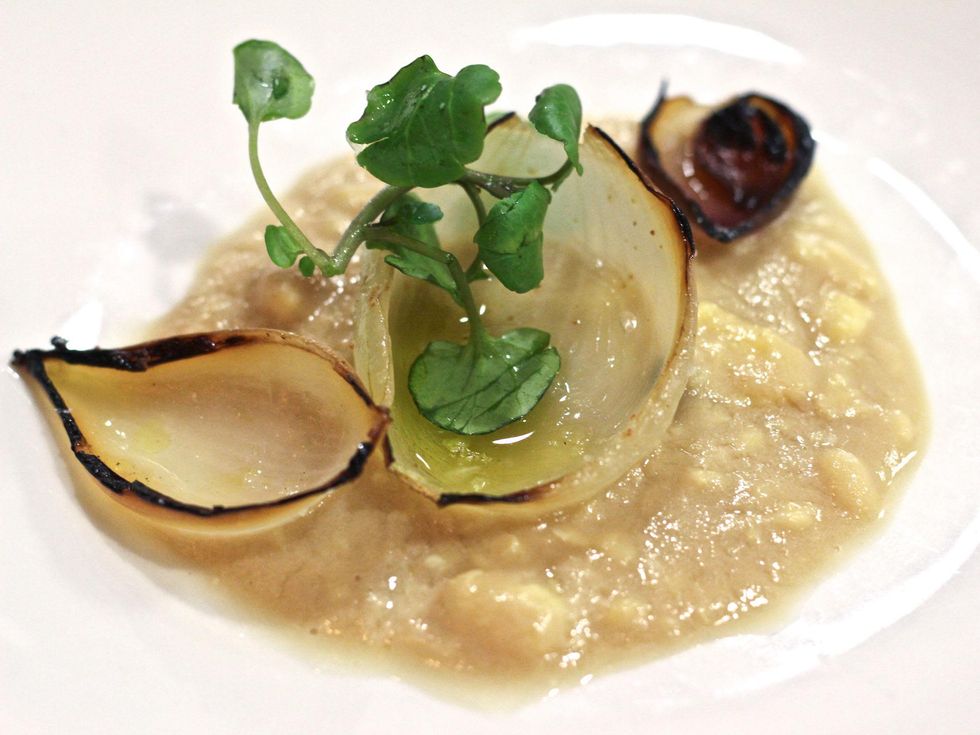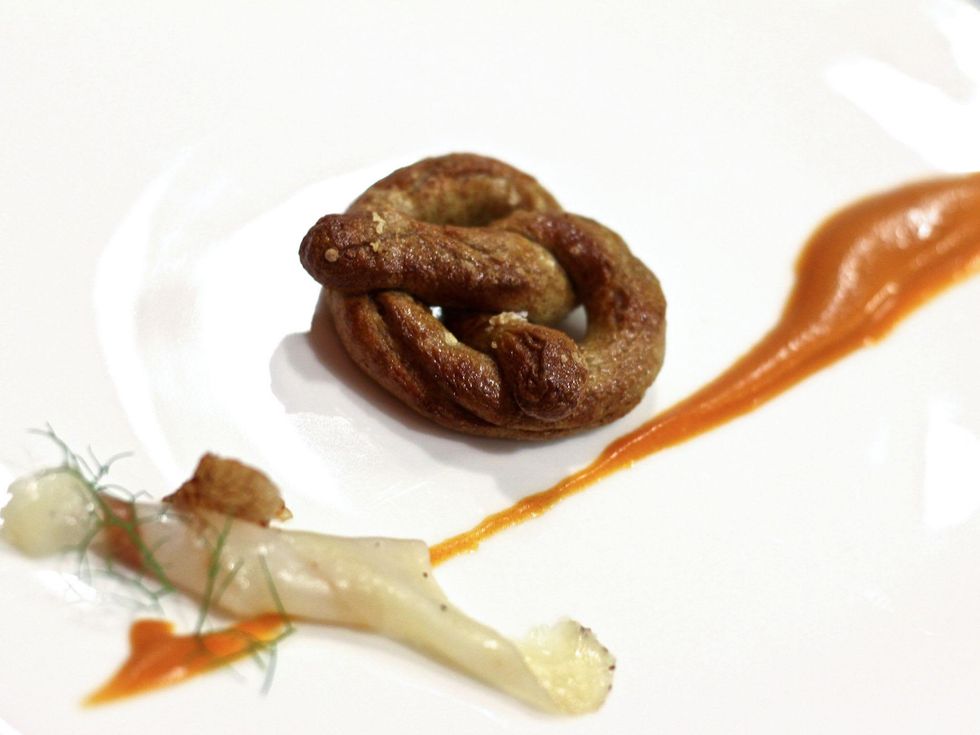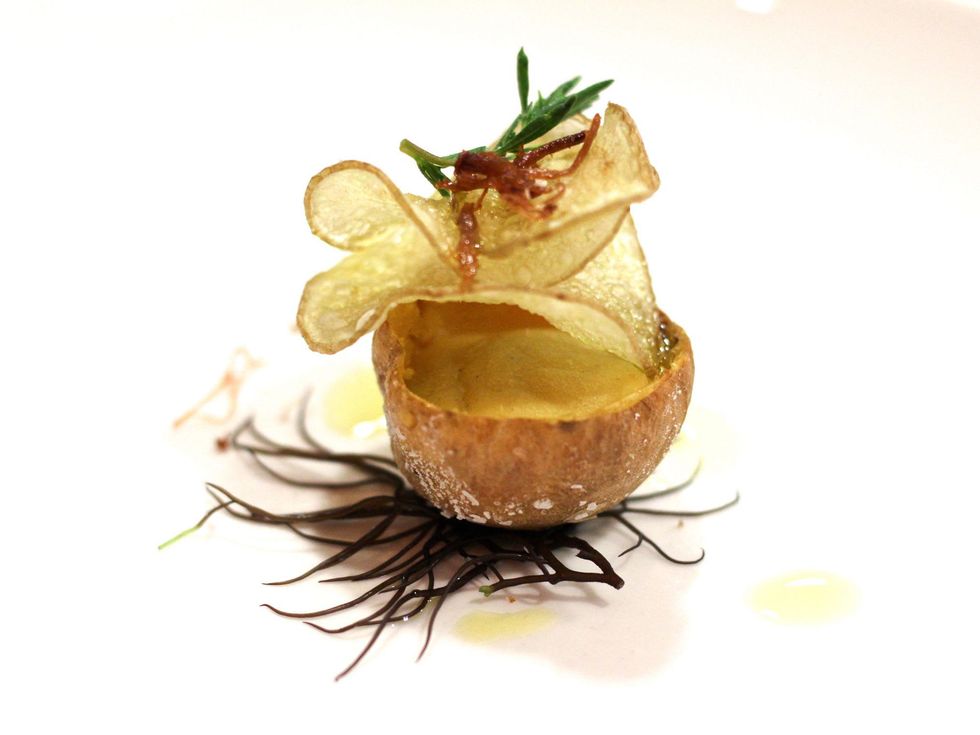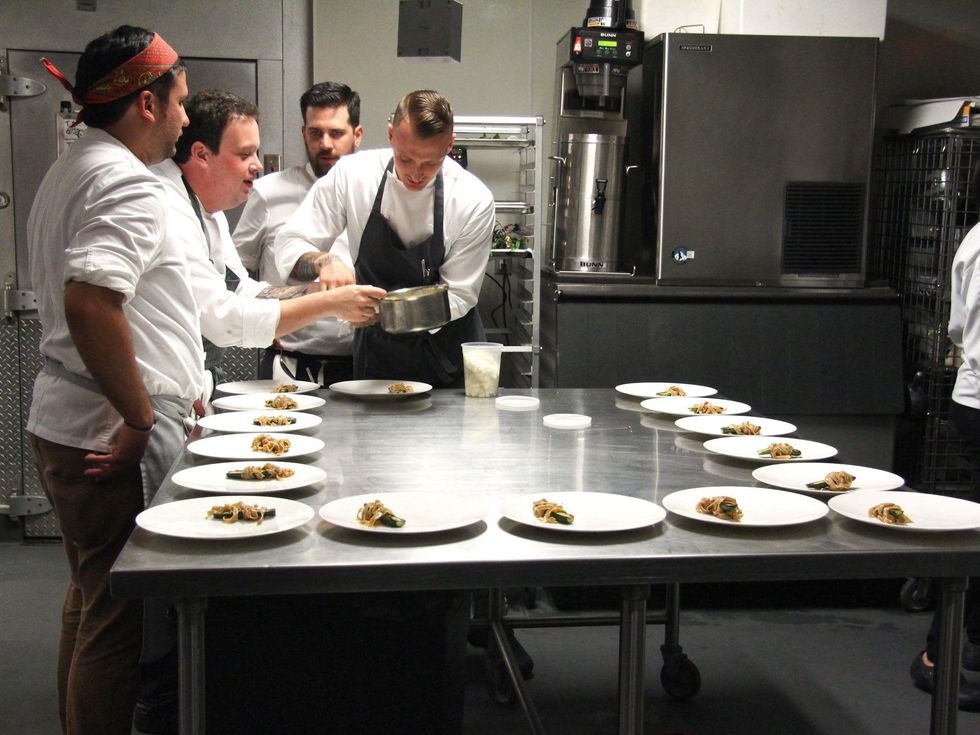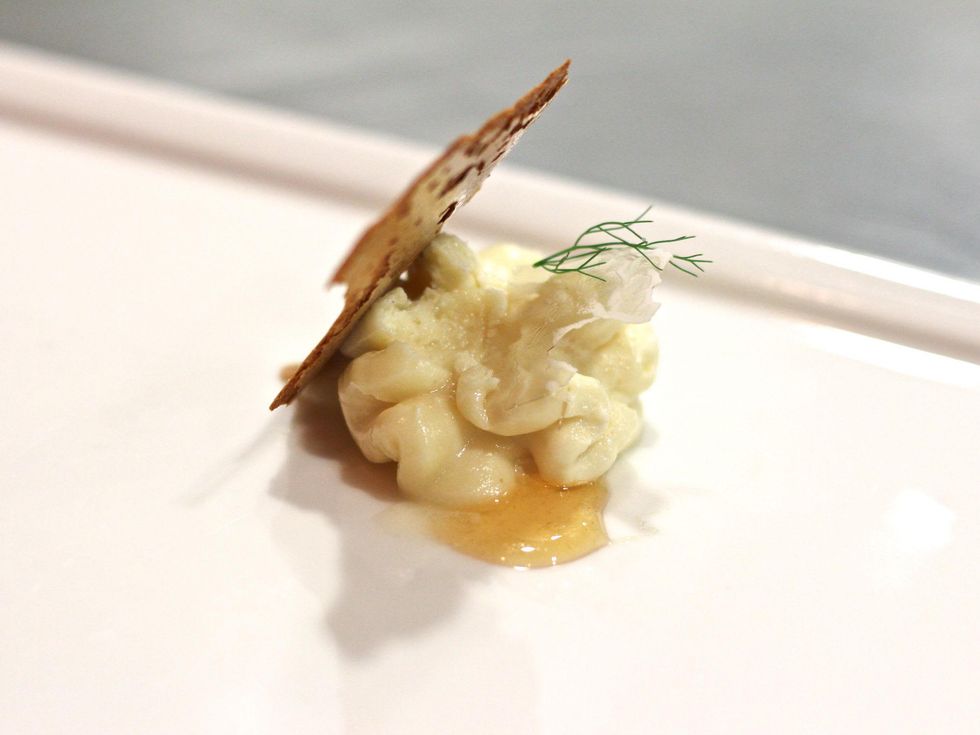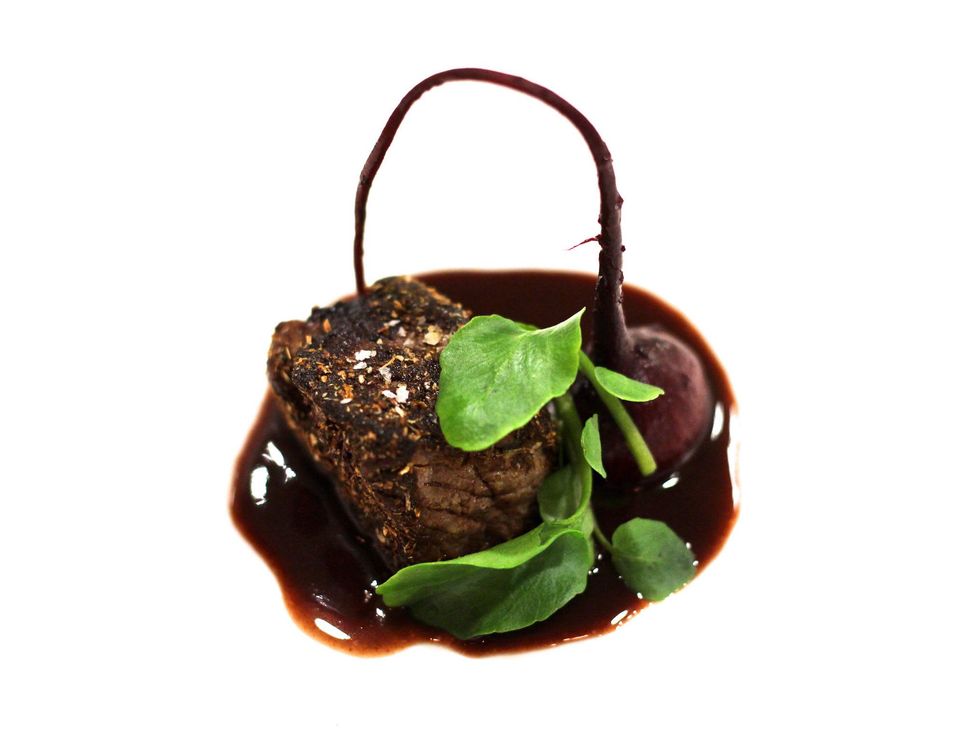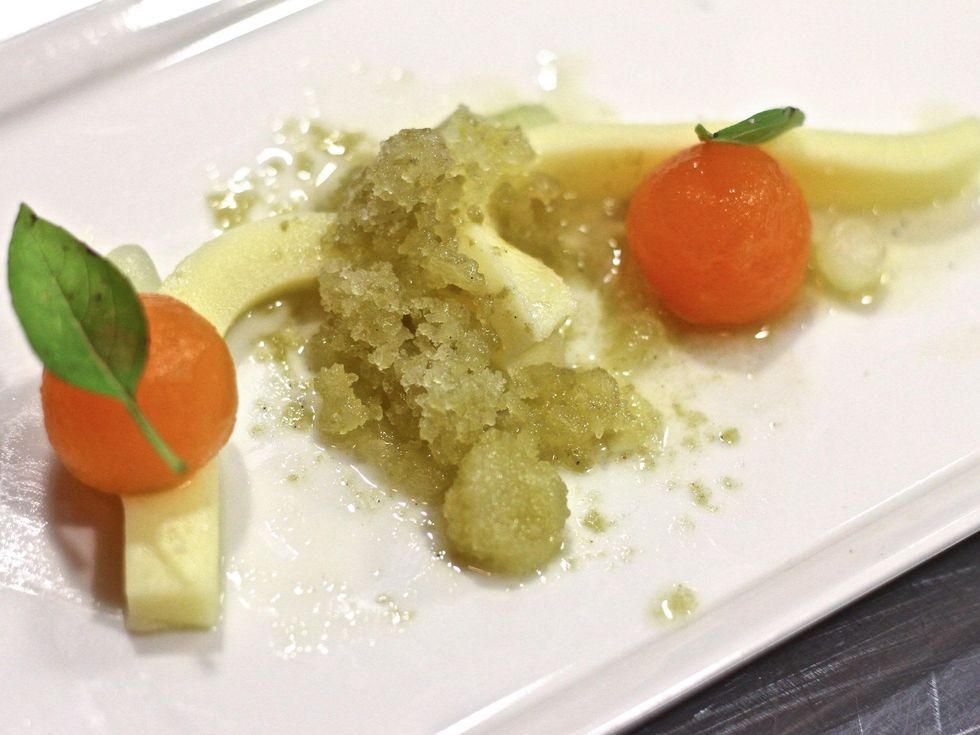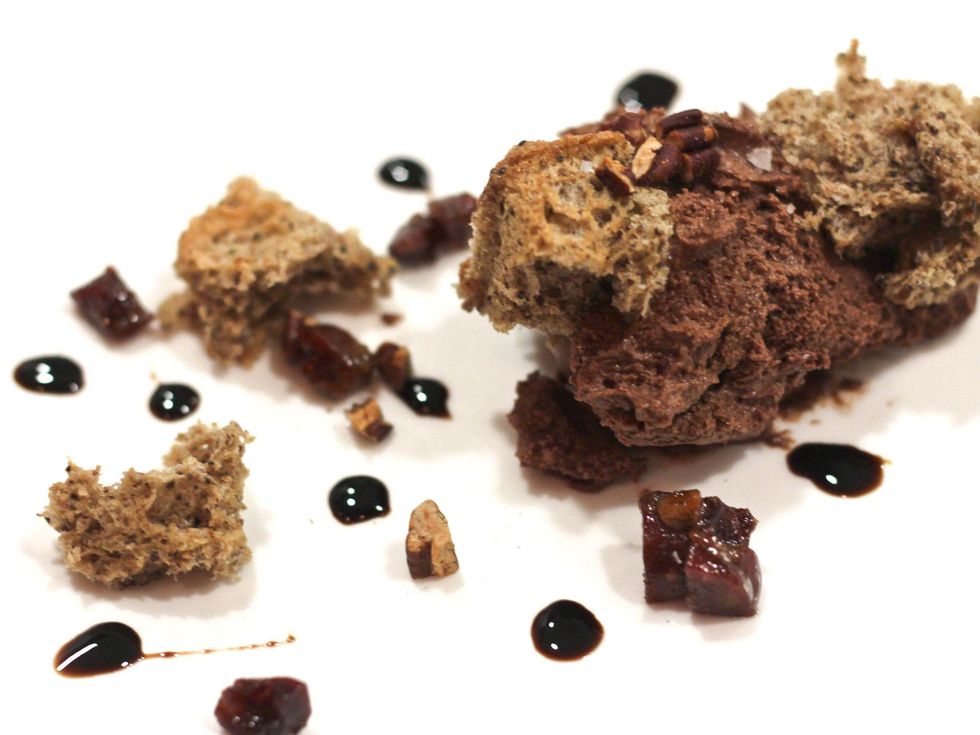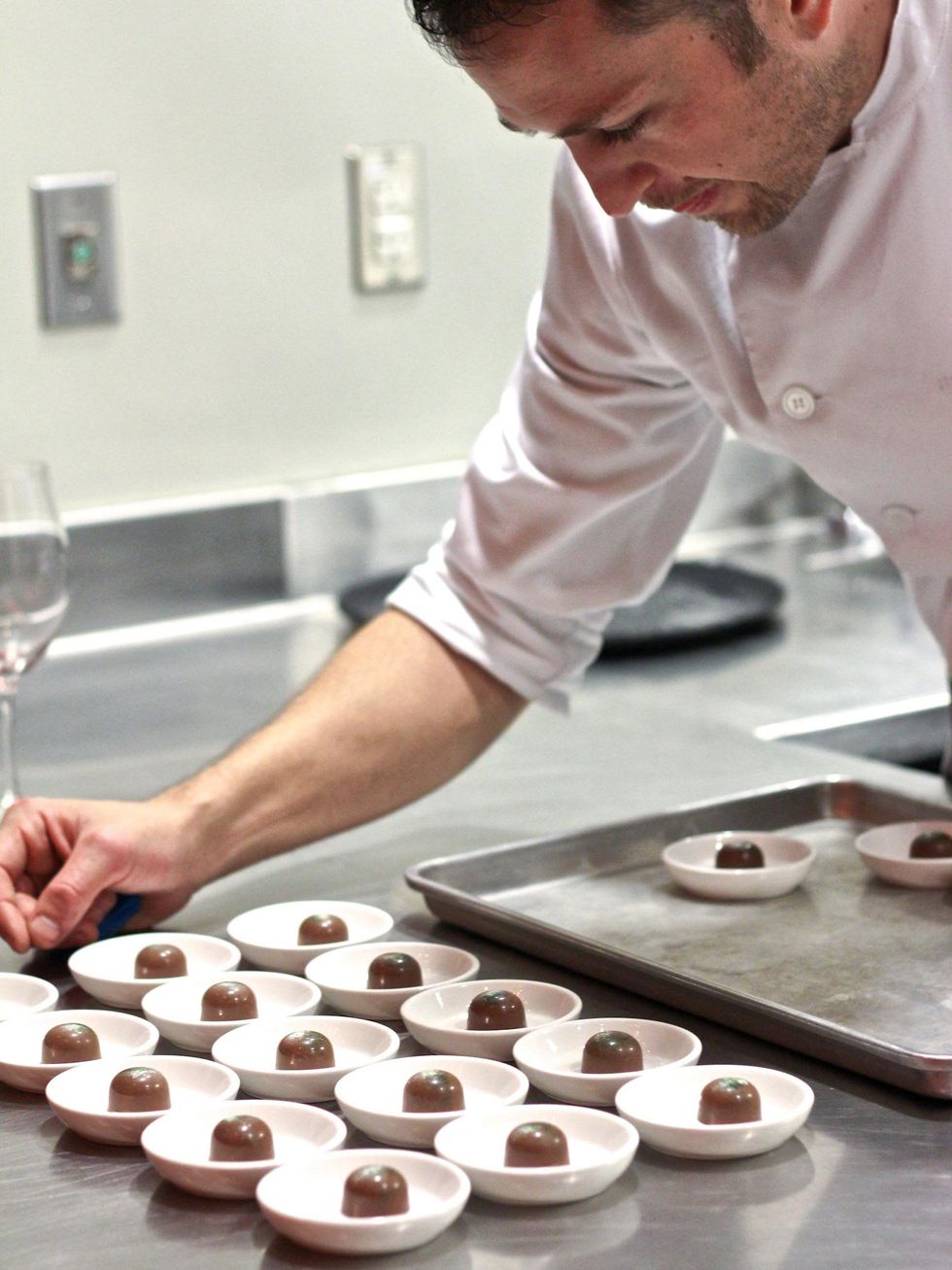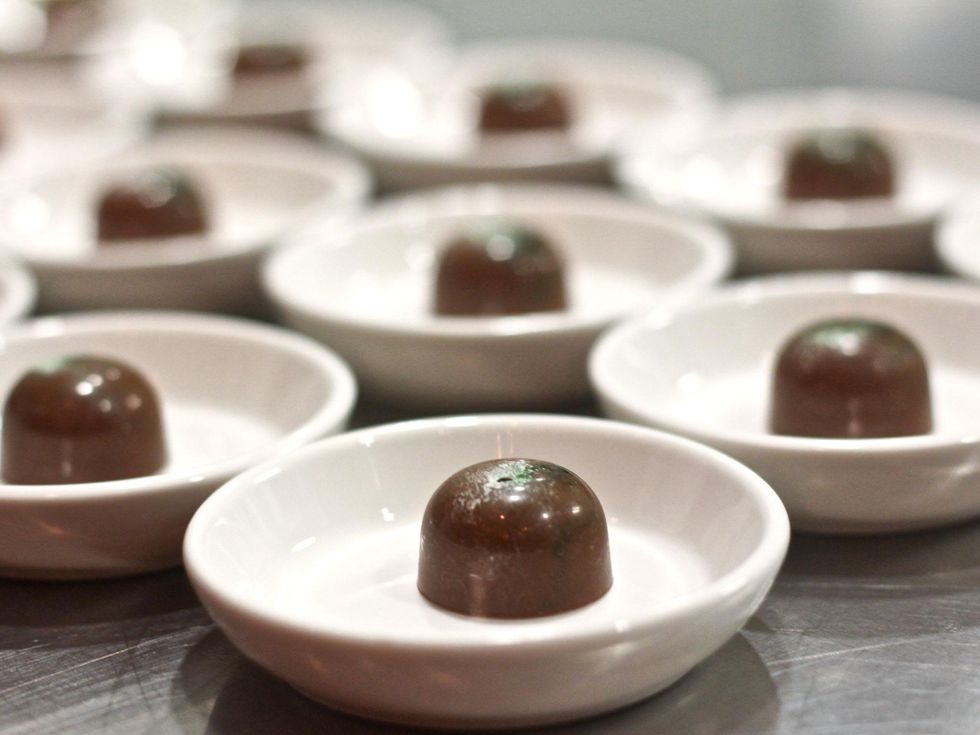Farm to Table to the Max
Behind the scenes with Uchiko chefs for intense hyper-local food challenge
Every year, “farm to table” cuisine becomes a little less novel and a lot more normal. Today, it is not uncommon for diners to inquire about the history of their food and be met with confident, informed answers. However, even restaurants cooking with seasonal ingredients find it isn’t logistically or financially realistic to locally source every single component of a dish.
Take, for instance, the nationally acclaimed Uchiko, whose contemporary Japanese farmhouse menu relies heavily on fish, which comes “from New Zealand to Japan and anywhere in between,” according to chef de cuisine Page Pressley.
“For produce, we source as much as we can locally. When we’re serving 400 to 450 people a night, there are very few people locally that can keep up with the supply we need.”
For his monthly 16-seat Food and Wine Project held August 4, Pressley decided to present the ultimate challenge: source every last ingredient locally.
“Spring, fall or even winter in this climate would be easier,” he said. “We wanted to showcase what can be found in even the most challenging conditions and how delicious it is when served at its peak.”
To make it even more challenging, Pressley and pastry chef Andy Lewis allowed themselves only one day to gather ingredients and create the menu. “The real challenge with this [was] not sourcing ingredients,” Pressley said. “It’s having the focus to make it all happen in a really short period of time.”
On the day before Sunday's dinner, I trailed the two through several farmers markets and locally owned shops and back to the kitchen of Uchiko to get a glimpse of their culinary improvisation in action:
10:20 am: I met Pressley and Lewis at the Barton Creek Farmers Market. They began their morning at Sunset Valley Farmers Market and had already procured plenty of ingredients: long beans, watercress, and kale from Flintrock Hill Farm; cantaloupe and patty pan squash from Ottmer’s Farm; goat yogurt and milk from Swede Dairy; lavender from Texas Lavender; peaches from Caskey Orchards; local popcorn from Fruitful Hill; whole wheat flour and pig head from Richardson Farms; and honey from Comanche Oaks Farm.
10:30 am: They paid a visit to High Country Bison. Pressley hoped for neck or tongue but settled for strip steak. “That’s part of this process,” he said. “We all have what we want, but we have to stick to the theme. It’s the concept of adjusting on the fly. That’s the whole challenge.”
10:40 am: Pressley and Lewis loaded up on green tomatoes at Hillside Farms out of Stonewall, Texas.
10:47 am: Lewis debated sugar babies at Johnson’s Backyard Garden but put them back, because they were already using cantaloupe.
10:48 am: The duo decided to grab some young zucchini. “When they’re this tender, you can caramelize them almost like plantains,” Pressley said. They also purchased some zsa zsa peppers, lemon and Armenian cucumbers, and purslane — all from JBG.
10:58 am: While paying for the produce, they explored the herbs by the register and decided on summer savory and some of the strongest tarragon Pressley said he had ever tasted.
11:01 am: Lewis picked up two dozen eggs from Vital Farms, because “we can always do something with eggs.”
11:47 am: We entered Salt & Time, the sustainable butcher shop on East 7th Street. Pressley didn’t know exactly what he wanted, except “something salty and fatty but not too funky.”
12:01 pm: We left with guanciale, a salted and cured pig’s jowl; ham hocks to create a brodo; pecan salami, because “it looks amazing;” and coppa, “just because I love coppa,” Pressley said. He was already having visions of sous vide “bacon and eggs” type dish. “This is the fun part,” he said. “You get everything together, and it starts to happen.”
12:15 pm: We arrived at Con’Olio in search of local olive oil, but owner Jeff Conarko burst our bubble: There is no local olive oil due to the lingering drought. Any olive oil being sold as “Texas olive oil” is from a 2010 harvest (and, hence, not fresh), or it is imported from California. One detail of this dinner would not be local after all.
12:22 pm: After some tasting and guidance from Conarko, the chefs decided on an extra virgin olive oil from Portugal and two from Spain.
12:24 pm: The chefs discovered an espresso balsamic vinegar and saw it pairing perfectly with the pecan salami and dark chocolate. Sold!
1:20 pm: Back in the Uchiko kitchen, the magic began as Pressley and Lewis grouped ingredients together and brainstormed.
1:24 pm: Pressley took out some Dos Lunas cheese he sourced the day before and placed the ricotta with the squash, the queso fresco with the long beans, and the three-year aged cheddar with the corn and peaches.
1:26 pm: Out came some local hydroponically grown red ogo seaweed from Austin Sea Veggies.
1:35 pm: Pressley got really excited about the idea of a whole wheat scone with clotted cream from Dos Lunas.
1:39 pm: The chef tasted shishito peppers and wondered aloud if they should scrap the scone idea for a whole-wheat pretzel instead. Pressley then added toasted pimentón to the clotted cream and wondered if maybe they should throw some guanciale on there too.
1:58 pm: Game changer: tempura cook Michael Battista arrived bearing bags of produce from his garden. “Dude, it took forever to pull all these little carrots up!” he said, pulling delicate young carrots from a sack. He also brought oregano, marjoram, stevia, sage, fennel, rosemary, flowering verbena and mint flower. High fives and hugs all around.
2:03 pm: Mexican marigold got added to the popcorn dish, and it was decided that pecan salami and espresso vinegar do, in fact, belong together.
2:05 pm: Pressley and Lewis began readying a bag of clotted cream and marjoram for sous vide. “The process should separate it, almost like making ghee, but in a modernist way,” Pressley said with a laugh. “If we can’t laugh at ourselves, then what are we doing? I mean, we’re putting clotted cream and marjoram in a bag, then sealing and cooking it. Can’t we just use a pot?”
2:08 pm: Into the sous vide machine it went. “Cooking is little more than time and temperature at the end of the day,” Pressley said.
When I left them Saturday afternoon, they had begun the process of sketching out each dish and assigning the prep work that would’ve been halfway completed for any regular dinner service. Pressley said many details would change before dinner Sunday night.
“Whenever you do something for the first time, it’s rarely perfect. It takes some fine tuning,” he said.
The next night, we were greeted with a delicious, dry Austrian cider. Sommelier Chris Melton had made the decision to pair the Austin ingredients with Austrian beverages. Besides the play on words, “Austrian wines are so food-friendly,” he said.
“They’re so high acid and have such great minerality to them. They’re usually pretty light-bodied so they’re super versatile.”
With a pleasant buzz, we sat down for dinner. As the chefs explained each of the 14 courses, I was amazed to see how each dish had evolved overnight. Ingredients purchased on a whim had become modernist edible art. It is one thing to watch this sort of improvisation on Top Chef but quite another to witness it in person.
The meal provided delicious proof of the bounty that exists in Texas, even in late summer.
“The cool part about living in Austin is we’re able to sustain all these independent businesses,” Pressley said. “It’s really cool that we have that option here, because a lot of cities in America don’t.”
